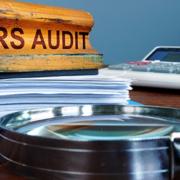Earlier this year, the IRS published a proposed safe harbor giving owners of certain rental real estate interests the opportunity to take advantage of the qualified business income (QBI) deduction. The QBI write-off was created by the Tax Cuts and Jobs Act (TCJA) for pass-through entities. The IRS has now released final guidance (Revenue Procedure 2019-38) on the safe harbor that clearly lays out the requirements that taxpayers must satisfy to benefit.
QBI in a nutshell
The TCJA added Section 199A to the Internal Revenue Code. It generally allows partnerships, limited liability companies (LLCs), S corporations and sole proprietorships to deduct as much as 20% of QBI received. QBI equals the net amount of income, gains, deductions and losses — excluding reasonable compensation, certain investment items and payments to partners for services rendered. The deduction is subject to several significant limitations.
Many taxpayers involved in rental real estate activities were uncertain whether they would qualify for the deduction, which prompted the proposed safe harbor. The final guidance leaves no doubt that individuals and entities that own rental real estate directly or through disregarded entities (entities that aren’t considered separate from their owners for income tax purposes, such as single-member LLCs) may be eligible.
Covered interests
The safe harbor applies to qualified “rental real estate enterprises.” For purposes of the safe harbor only, the term refers to a directly held interest in real property held for the production of rents. It may consist of an interest in a single property or multiple properties.
You can treat each interest in a similar property type as a separate rental real estate enterprise or treat interests in all similar properties as a single enterprise. Properties are “similar” if they’re part of the same rental real estate category (that is, residential or commercial). In other words, you can only hold commercial real estate in the same enterprise with other commercial real estate. The same applies for residential properties.
Bear in mind that, if you opt to treat interests in similar properties as a single enterprise, you must continue to treat interests in all properties of that category — including newly acquired properties — as a single enterprise as long as you use the safe harbor. If, however, you choose to treat your interests in each property as a separate enterprise, you can later decide to treat your interests in all similar commercial or all similar residential properties as a single enterprise.
Notably, the guidance provides that an interest in mixed-use property may be treated as a single rental real estate enterprise or bifurcated into separate residential and commercial interests.
Safe harbor requirements
The final guidance clarifies the requirements you must fulfill during the tax year in which you wish to claim the safe harbor. Requirements include:
Keeping separate books and records. You must maintain separate books and records reflecting income and expenses for each rental real estate enterprise. If the enterprise includes multiple properties, you can meet this requirement by keeping separate income and expense information statements for each property and consolidating them.
Performing rental services. For enterprises in existence less than four years, at least 250 hours of rental services must be performed each year. For those in existence at least four years, the safe harbor requires at least 250 hours of rental services per year in any three of the five consecutive tax years that end with the tax year of the safe harbor.
The rental services may be performed by owners or by employees, agents or contractors of the owners. Rental services include:
- Advertising to rent or lease the property,
- Negotiating and executing leases,
- Verifying tenant application information,
- Collecting rent,
- Performing daily operation, maintenance and repair of the property, including the purchase of materials and supplies,
- Managing the property, and
- Supervising employees and independent contractors.
Financial or investment management activities, studying or reviewing financial statements or reports, improving property, and traveling to and from the property don’t qualify as rental services.
Maintaining contemporaneous records. For all rental services performed, you must keep contemporaneous records that describe the service, associated hours, dates and the individuals who performed the service. If services are performed by employees or contractors, you can provide a description of them, the amount of time employees or contractors generally spent performing those services, and time, wage or payment records for the individuals.
This requirement doesn’t apply to tax years beginning before January 1, 2020. The IRS cautions, though, that taxpayers still must establish their right to any claimed deductions in all tax years, so be prepared to document your QBI deduction.
Providing a tax return statement. You must attach a statement to your original tax return (or, for the 2018 tax year only, on an amended return) for each year you rely on the safe harbor. If you have multiple rental real estate enterprises, you can submit a single statement listing the requisite information separately for each.
Excluded real estate arrangements
The safe harbor isn’t available for all rental real estate arrangements. The guidance excludes:
- Real estate used as a residence by the taxpayer (including an owner or beneficiary of a pass-through entity),
- Real estate rented or leased under a triple net lease that requires the tenant or lessee to pay taxes, fees, insurance and maintenance expenses, in addition to rent and utilities,
- Real estate rented to a commonly controlled business, or
- The entire rental real estate interest if any part of it is treated as a specified service trade or business (SSTB) for purposes of the QBI deduction. (SSTBs with taxable income above a threshold amount don’t qualify for the deduction.)
The guidance states that taxpayers that don’t qualify for the safe harbor may still be able to establish that an interest in rental real estate is a business for purposes of the deduction.
Next steps
The final safe harbor rules apply to tax years ending after December 31, 2017, and you have the option of instead relying on the earlier proposed safe harbor for the 2018 tax year. Plus, you must determine annually whether to use the safe harbor. We can help you determine whether you’re eligible for this and other valuable tax breaks.
© 2019











